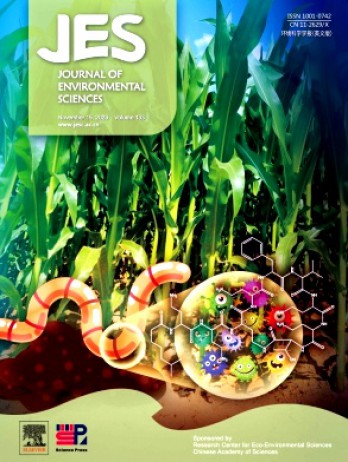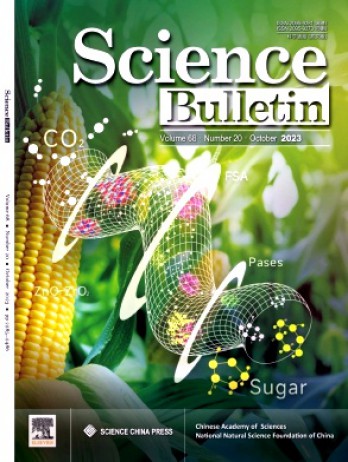想在《Journal of Mountain Science》雜志實現(xiàn)快速發(fā)表,需要遵循一定的策略和步驟。
以下是一些建議,具體策略如下:
1.?選擇合適的期刊
了解期刊要求:《Journal of Mountain Science》雜志要求投稿內(nèi)容與地質領域相關,確保論文主題符合雜志的定位,主要欄目有技術與方法、專論與綜述、學術探討等。
關注審稿周期:《Journal of Mountain Science》雜志的審稿周期預計:預計1-3個月。
2.?提高論文質量
內(nèi)容質量:確保論文內(nèi)容新穎、觀點明確、數(shù)據(jù)可靠,避免與已有文獻重復。
嚴格按照《Journal of Mountain Science》雜志投稿要求準備稿件:
Author information
The authors should provide the following information for all authors when submitting a paper: author names, institutions, mailing addresses, email addresses, and research interest. Each letter of the family names of all authors should be capitalized.
Authorship
Authorship of articles is hugely important in academic careers as it is used to measure research productivity and as the basis for decisions on appointments, promotions, tenure and funding.
The authorship of academic papers should reflect who did the work. Papers submitted to the JMS should follow these rules:
1. A person who has not made a sufficient contribution to the work should not be included in the authors.
2. A person who has contributed substantially should be included in the authors.
3. If there are two or more authors, the corresponding author should be assigned. The first author will be taken as the corresponding author when no corresponding author is assigned.
4. All authors must sign to consent the submission.A cover letter with signature by all authors is required when the manuscript is submitted.
5.The author list and the author sequence should be fixed before submission. Requests to add or delete authors at revision stage or after submission can only be considered after receipt of written approval from all original authors and a detailed explanation from the corresponding author about the role/deletion of the new/deleted author (s).
Once an authorship dispute arises before publication, the process should be halted until the dispute is resolved. Changes of authorship or in the order of authors are not accepted after acceptance of a manuscript.
Figures and Tables
The Copyright and License Policies that apply to articles also apply to figures. Please do not submit any figures, photos, or tables that have been previously copyrighted unless you have and can supply written permission from the copyright holder to publish under the CC-BY or CC0 license. Without this, we cannot publish the figures.
Figures (photographs, graphs and diagram) should be in high quality, and in TIFF format. The TIFF figures should be saved at a minimum resolution of 600 dpi (dots per inch) at final size. TIFF file, especially those containing color, should be large. We encourage authors to provide color figures. Figure legends should be related to figures or plates, and they should be placed outside the figures or plates, NOT inside. The size of all letters and symbols should be appropriately fitting figures. The plate number and author's (photographer) name should be placed below or beside plates. Words in the figures must be in Times New Roman. Suggested figure sizes are 7-8 cm or 14-16 cm at width with font size at 8-9 point.
Tables should be editable in Microsoft Word easily, i.e., they should NOT be in picture format. Table titles should be concise and exactly to explain what the table shows.
References
The references are listed by the "author-publishing year" system. When a reference is cited in the text, the author(s) name(s) should be given if there are one or two authors (Zhang and Li 2009). If there are more than two authors, et al. is added after the first author. The year of publication should be indicated after the author(s) name(s)( Zhang et al. 2000). If a same author has more than one paper cited in one year, a, b, c … should be added after year of publication (Guo 2001a). When two or more references are cited in the same place in the text, ";" should be added between them (Zhang et al. 2000; Guo 2001a).
References after the text (cited list) should be a list of all the sources used in your paper, and arranged alphabetically by author's last name (family name), or when there is no author, by the first word of the title (except A, An or The). The author name should be written in the form of family name (written in full) first and then the initials (the capitalized first letter of the given name). The year of publication, the volume number of journals, the page range, the place of publication and the name of the publisher for each book cited should be provided in the references. For Non-English publication, the language should be marked at the end. All the items in reference should be shown as complete unabbreviated source citation except for author's name. All the listed references should be cited in the text.
For journal articles,Doi should be added at the end of each item of reference if they have ones.
Please refer to the following examples for the reference.
1. Book or monograph
Shrestha TB, Joshi RM (1996) Rare, endemic and endangered plants of Nepal. Kathmandu: WWF, Nepal Program. p 244.
Hao F, Quan J, Yang ZS, et al. (2000) Land Resources of Yunnan, Kunming, China. Yunnan Science and Technology Press. pp 60-62. (In Chinese)
2. Thesis
DeConto RM (1996) Late Cretaceous Climate, Vegetation, and Ocean Interactions: an Earth System Approach to Modeling an Extreme Climate. PhD thesis, University of Colorado, Boulder, Colorado. p 10.
3. Paper from a proceedings or monograph
Smaling EMA, Nandwa SS, Janssen BH (1997) Soil fertility in Africa is at stake. In: Buresh RJ et al. (eds.), Replenishing Soil Fertility in Africa. SSSA Special Publication No. 51. Wisconsin, USA. pp 47-61.
4. Paper from a serial publication
Kuhle M, Kuhle S (2010) Review on dating methods: numerical dating in the quaternary geology of high Asia. Journal of Mountain Science 7: 105-122.DOI: 10.1007/s11629-010-1116-1
Cui P, Hu KH, Zhuang JQ, et al. (2011) Debris flow discharge calculation and inundation simulation. Journal of Mountain Science 8: 1-9.DOI: 10.1007/s11629-011-2040-8
3.?優(yōu)化投稿流程
網(wǎng)絡投稿:通過《Journal of Mountain Science》雜志的官方網(wǎng)站進行投稿,確保所有信息填寫準確。
快速通道:部分期刊提供快速通道服務,可以縮短審稿和發(fā)表周期,但通常需要額外付費。
4.?積極應對審稿意見
及時關注審稿進度、與審稿人溝通、耐心等待錄用通知,通過遵循這些建議,作者可以提高論文的發(fā)表效率并增加被錄用的機會。
《Journal of Mountain Science》是由中國科學院主管,中國科學院·水利部成都山地災害與環(huán)境研究所主辦的國際性全英文期刊。主辦單位中國科學院·水利部成都山地災害與環(huán)境研究所是我國唯一專門從事山地研究的科研機構。
《Journal of Mountain Science》主要發(fā)表在自然條件和人類活動影響下山地環(huán)境演變與可持續(xù)發(fā)展的研究論文和知名專家的綜述性文章,選題范圍主要包括應對氣候變化背景下的山地科學研究、山地環(huán)境演變及其與人類活動的關系,山地生態(tài)系統(tǒng)退化與修復,以泥石流、滑坡、土壤侵蝕為重點的山地災害的動力過程及防治理論和技術,山區(qū)流域管理與開發(fā)治理,山區(qū)特色資源保護和開發(fā),山區(qū)文化多樣性和民族經(jīng)濟發(fā)展,山區(qū)少數(shù)民族問題與居民福利等。
綜上所述,《Journal of Mountain Science》雜志是一本具有較高學術水平和影響力的地質類期刊,它為廣大地質工作者提供了一個展示研究成果、交流地質思想的平臺。
《Journal of Mountain Science》雜志往年文章平均引文率
聲明:本信息依據(jù)互聯(lián)網(wǎng)公開資料整理,若存在錯誤,請及時聯(lián)系我們及時更正。



